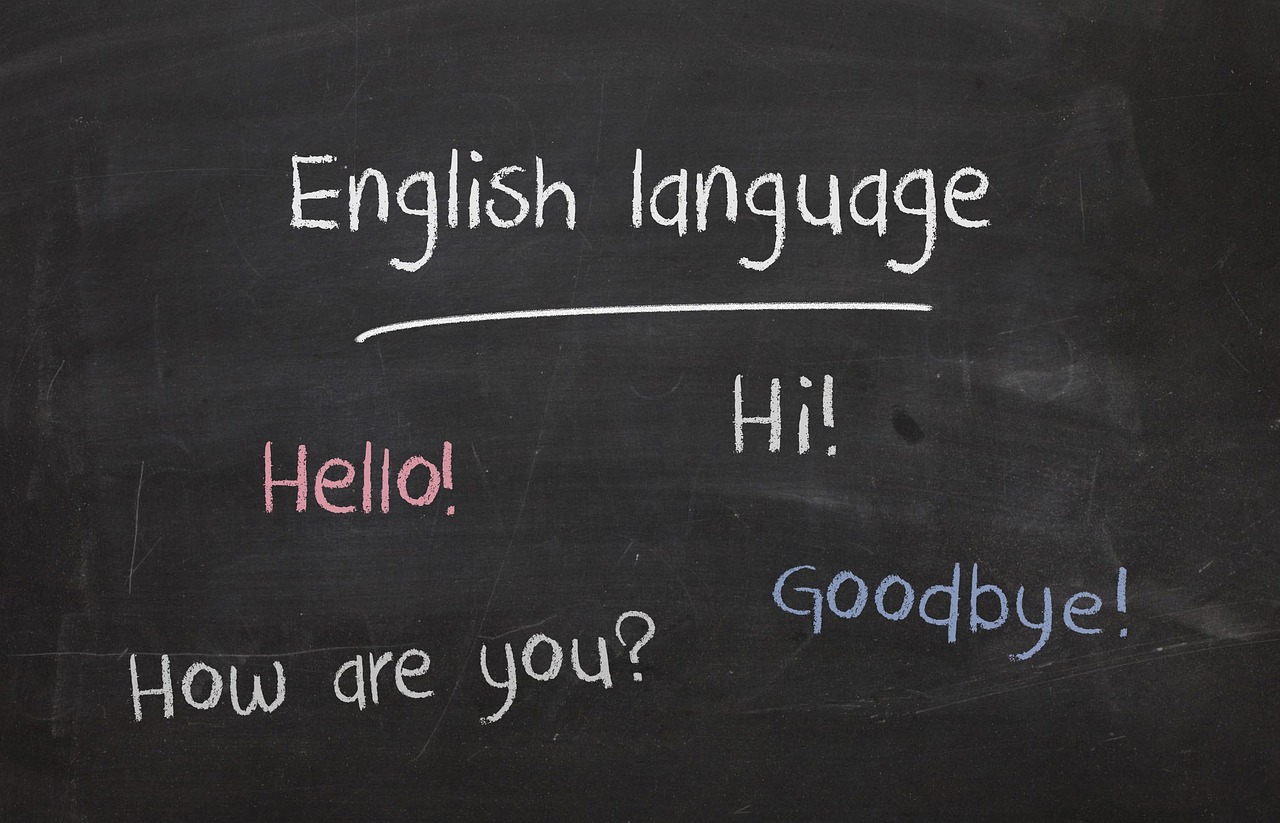Learn English while learning about daily life in Australia, with Rob McCormack
Podcast Number 160 – Doing an Overseas Language Course
(This podcast is 13 minutes and 29 seconds long.)
Hi,
In Podcast 127, I talked about the many methods I have used in my journey to learn another language, in my case the German language. One method I have used six times is to go to a country where they speak the target language I am learning. This is the best type of course because the language you are learning is all around you. In other words, you are immersed in the language, hence the term immersion courses for such courses. In my case, that means going to Germany, Austria or Switzerland. Of course, if you are learning English, then you have different options, including the United Kingdom, the USA, Canada, Australia and New Zealand, plus many others. In this podcast, I would like to tell you about my experience doing a 2-week immersion language course overseas.
Obviously, every language course will be slightly different, however I think that my experiences in learning German in a German-speaking country would be similar to learning English in an English-speaking country. I hope that talking about my experiences might encourage you to consider doing an immersion language course in your journey to learn English. I should add that 2 weeks is really the shortest language immersion course you can do. It is possible to take longer courses lasting up to several months, but I have not used these so I will restrict my discussion to the short 2-week courses I have attended.

Image by Biljana Jovanovic from Pixabay
My most recent experience relates to a German course offered in Austria, in a mountain town called Kitzbühel. As soon as you arrive, you find yourself reading the target language everywhere. That’s because, of course, all the signs and the advertising billboards all use the target language. But it’s not just the billboards and street signs. It’s also any notices you read on a notice board, say in a shopping centre, at a train station, or on the door of a barber’s shop, or on the church notice board. Everywhere you can see and read the local language. Importantly, these are real messages designed to be read and understood for a specific purpose – they are in a real context.
Let me give an example. During my recent course in Kitzbühel, I walked along certain streets to get from my rented apartment to my language school. One building I passed had a notice board out front. One day I stopped to read the notice board. There was a poster advertising a local amateur theatre group which was putting on a play on several evenings in this building during my stay. The poster had details about the play and how I could get tickets online. I attended the play later in the week and it turned out to be a very interesting language listening experience and a lot of fun.
However, most of my language learning experience came from attending the language school. My most recent course was typical of how these courses run. I had learning activities from 9.00am to 12.00 noon each week day morning – that’s 3 hours of language learning activities per day. In addition, 3 afternoons or evenings per week there would also be a school-led activity lasting about 2 hours each. So, in total, I received about 42 hours of language activities organised by the school during my 2-week immersion course. For 100% of this time, we would be speaking only the target language I was learning. Usually, these courses follow a planned sequence of activities, such as a mixture of grammar, vocabulary and speaking activities. Often, a text book is used to provide a structure and sequence for the activities, but sometimes the teacher chooses activities based on the needs and skills of the people in the class.
In the courses I attended, the number of students was always quite small, which is a good thing. The smaller the number, the more time each person will get for speaking and being actively involved. In the immersion courses I attended, the class sizes varied from 4 to 10.

Image by Biljana Jovanovic from Pixabay
However, the speaking activities come not only in the classroom. This is where I think you get the most value as a learner from an immersion course. Speaking and hearing the target language will continue outside of the classroom. For example, you will use the language when you:
- get on a bus or a train,
- go into a grocery store,
- go into a café to buy your lunch,
- ask for a table and then order your evening meal at a restaurant,
- go into a post office to buy a stamp and send a postcard home,
- speak to a receptionist at your hotel or hostel,
- go to the railway station to buy a train ticket,
- ask for directions from a local person if you are trying to find where the nearest ATM is,
- get asked directions by a visitor to the town, which happened to me twice,
- buy a ticket at the local museum which you are visiting,
- give directions to a taxi driver or Uber driver,
- speak to a shop assistant when buying a small present to take home for your family members,
- write an email to the person in charge of your accommodation, seeking help with an issue,
- overhear conversations between local people on say a train or bus, or in a shop,
- watch local television in the evening or before you leave in the morning, all in the target language.
All of these situations give you experience in using the new language for a real and meaningful purpose. This is when your learning will be most effective. Any mistake you make will be a very memorable learning opportunity. You will not forget these errors and any correction you make will stay with you, long into the future. I can remember during my most recent course, I had to go to the chemist to buy some medicine. Having to explain my requirement and then achieving success in being understood gave me a great deal of pleasure and a strong sense of achievement. In nearly all of these situations, I found the local people were polite and patient with me. That also gave me confidence.
On top of all these speaking and listening opportunities, I also spent around 10-15 hours over the 2-week period talking with my fellow students. This happens during the morning tea breaks and at lunch after our course finishes each day at 12.00 noon. We always went together to buy our lunch and then sit and talk together. In all my courses, my fellow students came from countries around the world. We always (and I mean always) spoke in the target language we were learning. It’s true that many of them could speak my language (English), but we tried never to use it. Why would you speak your own native language, when you have the opportunity to practise your new language with those who are also keen to speak it? During an immersion course, the whole point is to use the new language as often as you possibly can, to use it such that you start thinking in the language. Only an immersion course can do that for you.
In some immersion courses, it is possible to stay in accommodation with other students, or with a host family. Then you will get to speak your new language in the evening and morning as well. In one of my courses, I stayed at a guest house where other students from my course were staying. When we spoke with each other at breakfast, and as we walked to and from the school, we also always used the target language.
I think that using the target language with your fellow students is one of the great benefits of an immersion course. It really helps to make you feel like you are immersed in your new language. There is also the chance to make friends with people from all around the world.
You can find out about immersion courses in English and their cost by searching on the internet. I organised some of my courses through www.applelanguages.com, who also have immersion courses for those learning English, including courses in Australia.
If you have a question or comment to make, please leave it in the comments box at the bottom of this page. Or, you can send me an email at rob@slowenglish.info. I would love to hear from you. Tell me where you live, a little bit about yourself and what you think of my Slow English podcast. I will write back to you, in English of course. If you would like to take a short quiz to see if you have understood this podcast, you will also find it on my website. Goodbye until next time.
Rob
Podcast 160 Quiz - Did you understand the podcast?
You can take the quiz as many times as you like.
Vocabulary
accommodation = the place where you stay overnight when you are travelling
achieving = to get, to obtain, to reach a goal or aim
activities = things you do
amateur = not professional, usually not paid
ATM = Automated Teller Machine, a machine where you can withdraw cash from your bank account
benefits = advantages
billboards = a wall where you can put written messages and advertising posters
confidence = when you feel you can do something well, when you feel positive about your ability
consider= think about
context = the place where something is, including everything around it
designed = made, created
encourage = when you tell someone they should do something because it is good
experiences = things you have done before
fellow students = those learners who are learning the same thing as you, in a class
held = when an event happens
host family = a family who let you stay with them during a course
hostel = a special type of place to stay, usually for younger people, often cheaper than hotels
immersion = when something is all around you, eg, water, another language
in addition = also
including = as well as
involved = (here) when you are part of an activity with other people
local person = a person who lives in a town you are visiting
medicine = something you eat or drink which makes you well again when you are sick
memorable = will be a strong memory for you, you will remember it
methods = ways of doing something
notices = information written on a piece of paper which are put on a notice board.
opportunities = when you have the chance to do something worthwhile
options = choices
organised = to plan an event then make it happen
overhear = to hear people near you when they are talking to each another
poster = a large piece of paper with a written message and perhaps pictures or photos
putting on = (here) to organise an event then make it happen
receptionist = the person who first greets you when you walk into a business
requirement = what you need
restrict = (here) limit, not give too many details
sequence = the order in which things are done
situation = how things are, when something is happening
slightly = a small amount
specific = one of many
structure = how things are put together
target language = the language you are learning
text book = a book with a sequence of information and activities for learning something new
